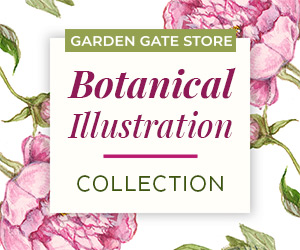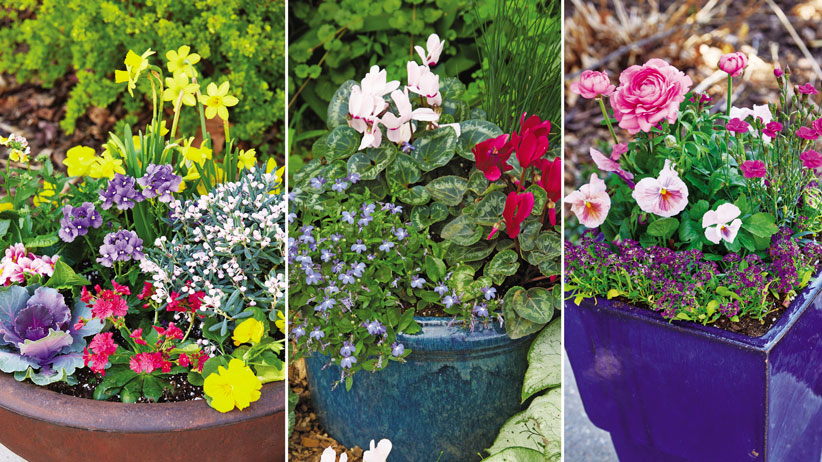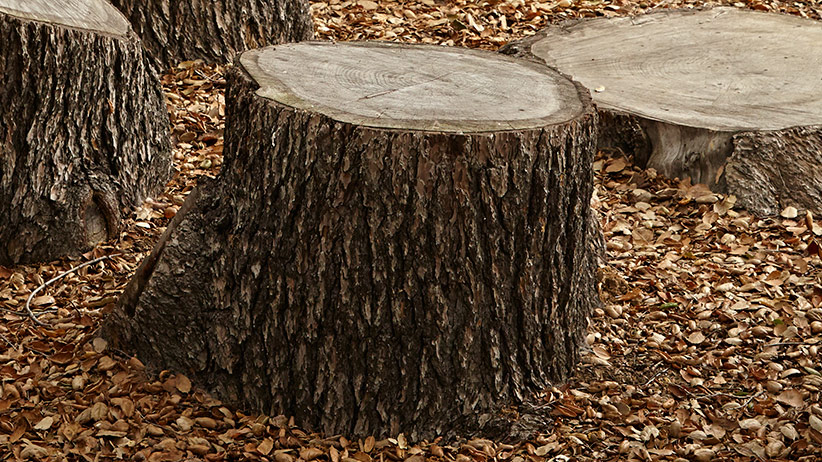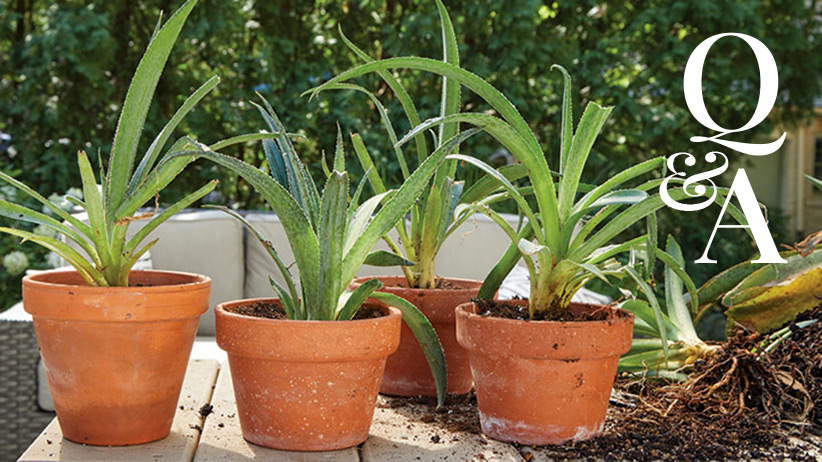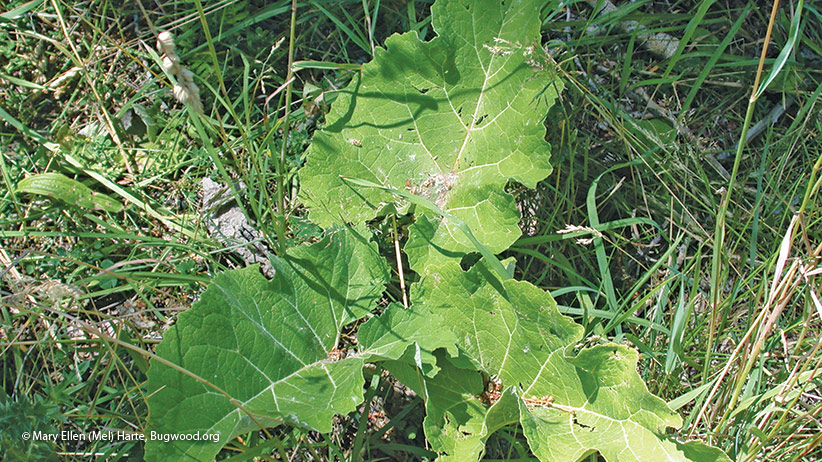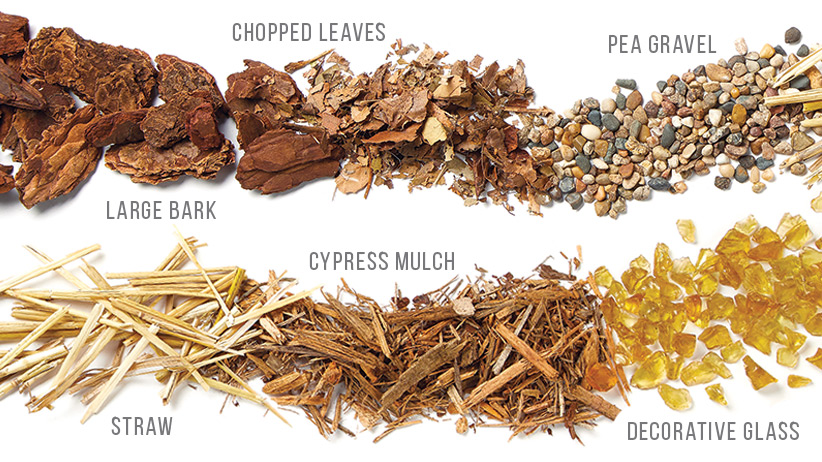
Mulch matters
Experts say that mulch is one of the best things for your garden. It can do so many things: Control weeds, retain water, regulate soil temperature, hold soil in place, suppress insects and diseases and keep produce clean... and it just looks nice. But with all the different mulches to choose from, how do you know which one is best? And which one will do the most good for your plants?
Three myths about mulch
You may have heard that sometimes mulch can cause problems, or that you can't use mulch made from fallen trees. But the benefits of mulch almost always outweigh any negatives. In fact, several of these issues are just myths:
-
Mulch acidifies soil
Pine bark, pine needle and leaf mulches may temporarily change pH slightly, but it would take years of adding these mulches to significantly lower the pH. Most plants won’t notice. -
Mulch robs nitrogen from soil
It is true that decomposing mulches use nitrogen in the soil, but this only happens at the point where the soil meets the mulch, and most plant roots are below that zone. Once the mulch has broken down, it actually releases nitrogen back into the soil. If you’re worried, sprinkle a slow-release granular fertilizer before you add a layer of mulch to counteract any potential deficiency that could affect shallow-rooted plants. -
Mulch attracts termites
Very few insects can survive the processing (shredding, bagging, transport) of mulch, so its not likely you’d bring or attract termites to your property in mulch. Bark mulches are hard for termites to digest — they are more interested in rotting logs and lumber.
Types of Mulch
After many years of gardening, I’m a firm believer in mulch, and I have my likes and dislikes. It varies depending on the location, the plants, or what job I want it to perform. Let’s take a look at which mulches work best for a few different situations below.
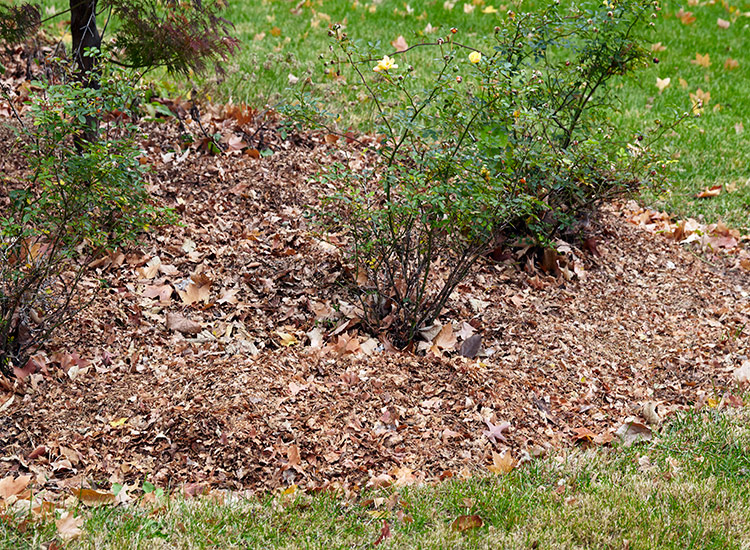
Best mulch for perennial & annual beds:
Chopped leaves, shredded bark, pine chips
I like fine-textured mulches that are easy to dig through when I want to plant something new. Wood-based materials with smaller pieces like shredded bark and pine chips are easy to work with. In contrast, pine needles and straw tangle in the tines of a rake or the roots of weeds as I pull them.
Chopped leaves also make a super mulch — and they’re cheap. Rake a pile in the fall, run a lawn mower over it once or twice, and collect the chopped leaves with the bagging attachment. (I often use a leaf vacuum with a mulching bag.) Spread the leaves in a light layer after a frost. In new beds, apply 2 to 3 inches of mulch after you plant, keeping materials 1 to 2 inches away from the base of the plants to prevent the stems or crowns from rotting. Instead of adding a thick new layer every year, use a rake to fluff the previous year’s mulch and freshen up the look. Top off lightly with a new layer if needed.
You Might Also Like:
Leaf Mulch Tip
Garden Compost Basics
Wheelbarrow, Garden Carts and More Ways to Haul Stuff
Five Tips to Control Weeds
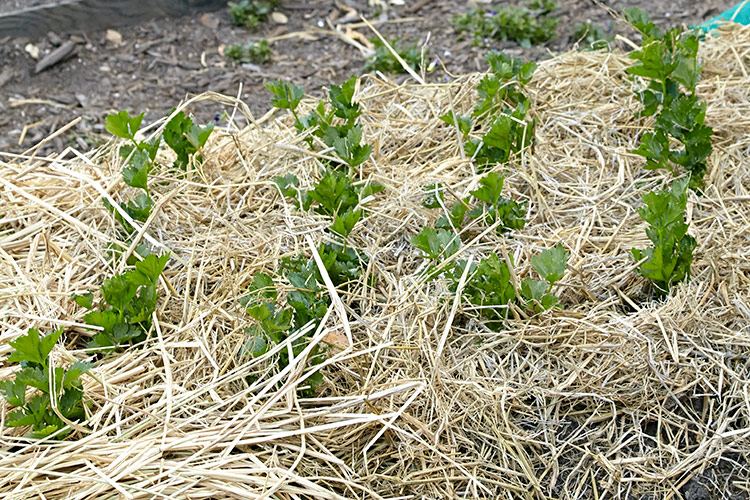
Best mulch for vegetable gardens
Weed- and seed-free hay or straw, dried grass clippings, landscape fabric
Weed suppression and water retention are key to success with vegetables. Hay and straw can be laid down in fluffy layers up to 6 inches deep, while grass clippings should be spread in layers 1-inch deep or less so they dry rather than forming a crust and staying wet underneath. These materials can all be tilled into the garden in late fall to help build healthy soil. Or leave them in place all winter, then pull the mulch back enough to plant seeds in spring, tucking it close to seedlings after they germinate.
While I almost never use it in ornamental beds, landscape fabric works extremely well in vegetable gardens to suppress weeds, plus it keeps produce clean. The trouble with landscape fabric in other types of beds is that mulches laid down on top of it break down, providing a little layer of organic matter where weeds can germinate above the fabric. In the vegetable garden, don’t cover it with mulch. Simply pull it up at the end of the season to reuse the next year.
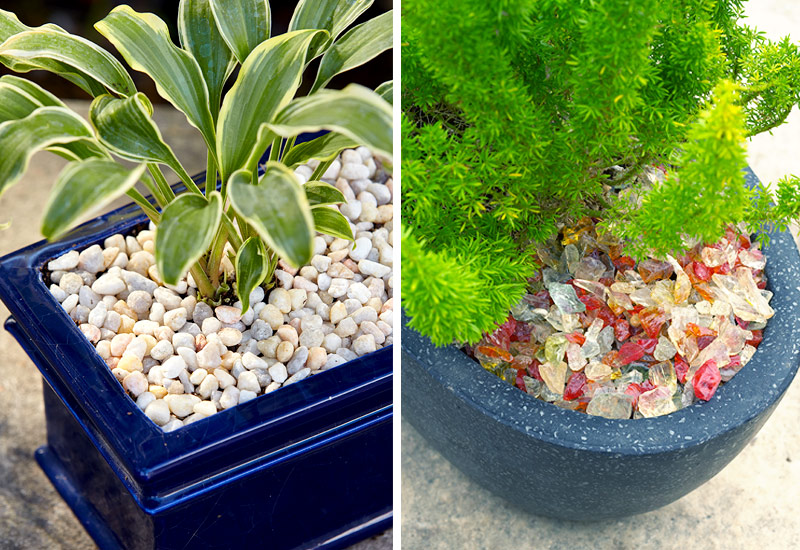
Best mulch for containers
Decorative glass, marbles, pebbles, clay balls, moss
Just a little mulch scattered on the surface of potting mix creates a finished look and holds moisture. It also prevents soil from splashing up onto foliage or washing out over the side of the pot when you water the container.
Almost anything can be used for topdressing containers. Don’t worry about whether it’s organic and will break down — it only has to last a season. You can even get creative with fun materials from a craft store like decorative glass or polished pebbles. Scoop them back up before you take the container apart at the end of the season and rinse them off in a colander to use again the next year.
You Might Also Like:
Best Tools for Container Gardening
What Should I Do With Used Potting Mix?
Hanging Basket Hacks
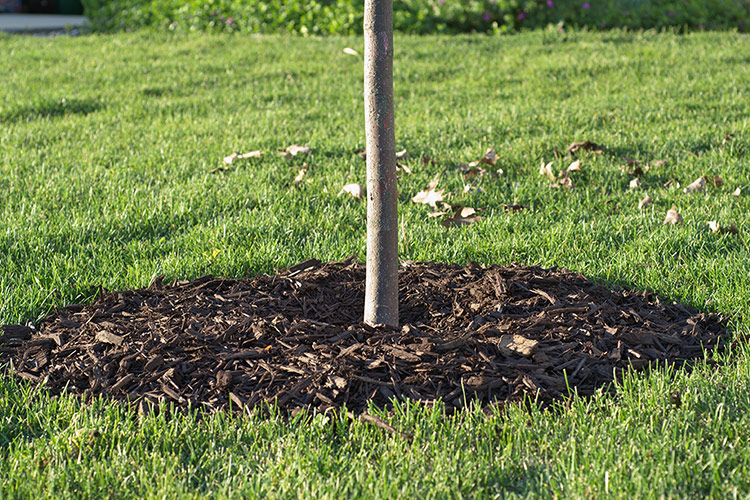
Best mulch for trees and shrubs
Large bark, arborist wood chips, river rock
I find that chunkier barks and rock mulches work well around permanent tree and shrub plantings where I’m not likely to need to dig. Big, heavy pieces don’t blow away or get caught up in a rake, and they last a long time. Rocks can reflect and retain heat, so I only use them in shadier spots.
A 3-inch layer of mulch is the maximum depth needed around trees and shrubs — any deeper and plants will grow surface roots in the mulched area that can be damaged if the mulch dries out. And never pile thick layers around the stems and trunks of plants. These “mulch volcanoes” stay wet, causing disease and allowing insects and rodents easy access to the plant’s trunk or stems, where they can cause damage.
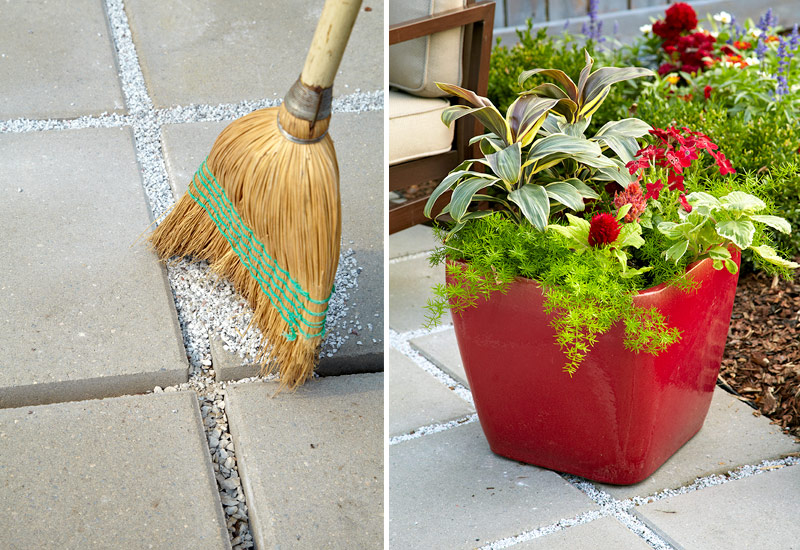
Best mulch between pavers
Pea gravel, turkey grit
Weeds are bound to emerge between pavers in any little crack. If there is at least an inch of space between the pavers, mulch can be helpful, not only by slowing weed growth but also by making it easier to pluck them out. A solid, inorganic mulch like pea gravel or turkey grit will stabilize the pavers as well and won’t deteriorate. These materials are also not flammable, so you can use a weed torch to flame-kill weeds in the cracks.
Try to get a 2-inch-deep layer of mulch for the best weed suppression. If soil accumulates in the cracks, use a hard stream of water to wash it out so it doesn’t provide a good place for weeds to germinate. Sweep gravel or grit bits back into the cracks if any wash out, then sprinkle a light topping of new material to refresh the look.
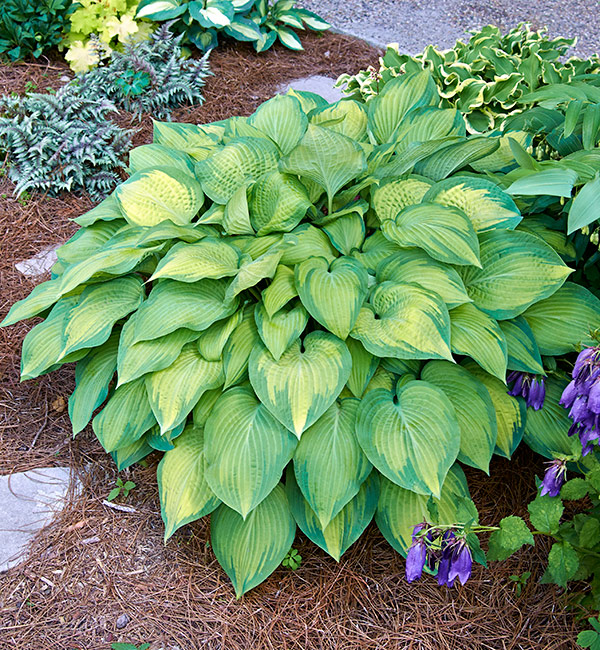
Best mulch for foundation plantings
Inorganic mulches, pine needles, cypress mulch
You may want a plant-free space right alongside the house so you can get close to do maintenance. But keep mulch at least 6 inches away from your foundations, especially if wood siding or the sill plate is close to the ground. Mulch can create moist conditions that could cause wood siding to rot if piled too deeply. I like to use inorganic mulches like river rock that stay drier and won’t deteriorate in that area.
Insects like moist mulched areas, so leaving a 6-inch-wide bare space between the foundation and the mulch prevents them from migrating easily to the house when cold weather comes. Cypress mulch seems to have insect repellent properties, and pine needles make a loose mulch that dries faster for a less insect-hospitable area, so these mulches work great in foundation plantings.
Products You May Like:
Garden Dump Cart
Wheelbarrow
Mulch-spreading Fork







